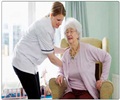Nursing interventions are often based only on traditional guidelines and are less dependent on research or other evidence-based practice guidelines, reveals an article in Critical Care Nurse.

Current reviews of clinical practice suggest that fewer than 15 percent of clinicians consistently implement evidence-based care and indicate that it can take up to two decades for original research to be put into routine clinical practice, the article notes.
Lead author Mary Beth Flynn Makic, RN, PhD, CNS, CCNS, is a research nurse scientist in critical care at University of Colorado Hospital and an associate professor at the University of Colorado, College of Nursing, Aurora.
"It is important for nurses to continually evaluate their practice to ensure that current best evidence is guiding practice interventions, rather than providing care based on tradition alone," Makic said. "As research and new evidence evolve, nurses are often the frontline catalysts for translating them into practice."
The article examines the evidence associated with four common clinical practices that are within the realm of nursing - turning critically ill patients, promoting sleep in the ICU, preventing venothromboembolism and managing feeding tubes in infants and children. Among the questions the article answers with recommendations based on current research:
- Should patients be re-positioned at least once every two hours?
- How can nurse-driven protocols promote sleep in critically ill patients?
- What is the best way to verify correct placement of a feeding tube in infants and children?
- How can nurses help prevent patients from developing deep vein thrombosis and other venothromboembolism-related complications?
For each intervention, the authors examine current practice, critique the current best evidence and offer implications for practice.
Advertisement
Access the article abstract and full-text PDF by visiting the CCN website at www.ccnonline.org.
Advertisement
About the American Association of Critical-Care Nurses: Founded in 1969 and based in Aliso Viejo, Calif., the American Association of Critical-Care Nurses (AACN) is the largest specialty nursing organization in the world. AACN joins together the interests of more than 500,000 acute and critical care nurses and claims more than 235 chapters worldwide. The organization''s vision is to create a healthcare system driven by the needs of patients and their families in which acute and critical care nurses make their optimal contribution.
Source-Newswise








